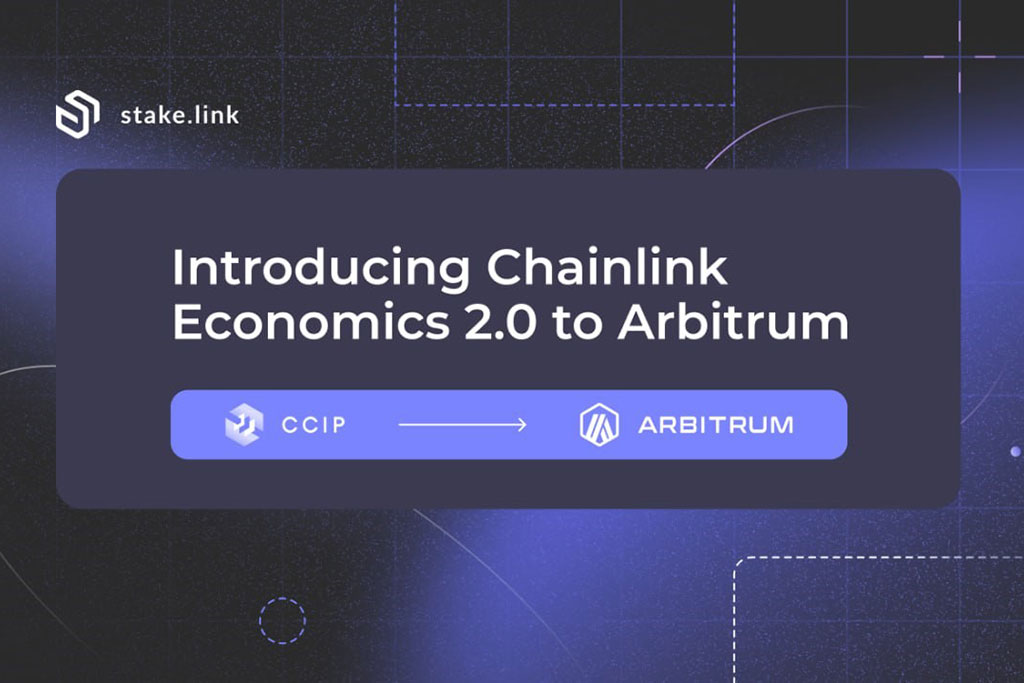
Let’s talk web3, crypto, Metaverse, NFTs, CeDeFi, meme coins, and Stocks, and focus on multi-chain as the future of blockchain technology. Let us all WIN!
Stake.link opted to integrate with Arbitrum network to offer users more staking flexibility and pave the way for lower gas fees for the Chainlink community.
 Edited by Julia Sakovich
Updated
3 mins read
Edited by Julia Sakovich
Updated
3 mins read

Stake.link, a liquid delegated staking platform built on top of the Chainlink (LINK) staking system, has announced the long-awaited integration with the Arbitrum (ARB) network to enable better staking economics. The decision to integrate the Stake.link protocol with the Arbitrum network was approved by a unanimous vote from the governance council. According to the announcement, liquid Chainlink staking users can now tap on the low gas fees on the Arbitrum network at a higher speed.
Furthermore, the Arbitrum network has grown to the leading Ethereum-based layer one scaling solution with more than $3.2 billion in Total Value Locked (TVL).
With the latest expansion, Stake.link users can now stake both LINK tokens and stake.link’s SDL governance token, on Arbitrum, and receive an NFT that represents staked SDL dubbed reSDL. In addition, Stake.link users can now bridge their stLINK receipt tokens and convert them to wrapped staked LINK, or wstLINK tokens onto the Arbitrum network.
“The decision to go cross-chain on Arbitrum paves the way for a more user and gas-friendly staking experience for the Chainlink community, increasing accessibility by reducing the costs of participation. At the same time, LINK stakers will be able to explore more yield-generating DeFi activities on Arbitrum,” the company noted.
The Stake.link protocol is set to benefit significantly from the integration with the Arbitrum network, especially through its ecosystem grant program. Furthermore, the Arbitrum network intends to reward protocols that deploy on its network in a bid to ensure a sustainable future.
In addition, the Stake.link protocol intends to work closely with Camelot, an Arbitrum-based decentralized exchange (DEX) to provide LINK stakers with additional incentives through its native GRAIL token.
Stake.link protocol is currently the only liquid staking platform offering the Chainlink staking program with higher rewards. The Stake.link protocol offers users a blended reward rate of about 8.36 percent compared to the 4.32 percent offered by the Chainlink staking program. As a result, the Stake.link protocol has managed to attract more LINK stakers seeking higher returns on their initial investment.
Moreover, Stake.link protocol users can seamlessly swap between stLINK to LINK through the Curve Finance network. As of this writing, the Curve Finance stLINK/LINK pool had about 64,948 stLINKs and around 72, 947 LINK cumulatively worth about $2.63 million.
The Stake.link protocol enables anyone in the Chainlink community to stake their LINK assets to 15 of the most prominent Chainlink node operators and receive rewards in the form of stLINK.
The Chainlink staking program has existed for about 14 months on the Ethereum mainnet and gained popularity among both retail traders and institutional investors.
Disclaimer: Coinspeaker is committed to providing unbiased and transparent reporting. This article aims to deliver accurate and timely information but should not be taken as financial or investment advice. Since market conditions can change rapidly, we encourage you to verify information on your own and consult with a professional before making any decisions based on this content.

Let’s talk web3, crypto, Metaverse, NFTs, CeDeFi, meme coins, and Stocks, and focus on multi-chain as the future of blockchain technology. Let us all WIN!





